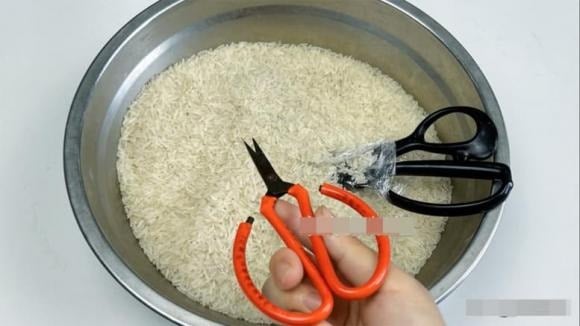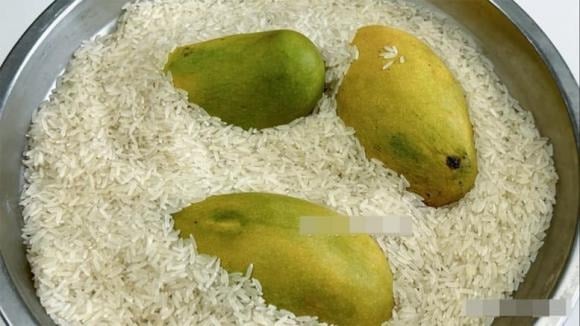Today, I’d like to share with you some amazing everyday life hacks using rice. Let’s explore them together!
Tip 1: Prevent Rust on Scissors
Scissors are a familiar household item, but they are prone to rust if made of iron and kept in a damp place. To prevent rust, simply wrap your scissors in plastic wrap or a sealed bag, then stick them into a container of rice. The dry rice helps absorb moisture and keeps the scissors from oxidizing. This method is incredibly simple yet surprisingly effective.

Tip 2: Egg Preservation with Rice
During hot seasons, eggs can quickly spoil if left out, but taking up valuable space in the fridge is not ideal. A clever trick is to clean the eggs and bury them in a container of rice, with the larger end facing upwards. Rice maintains a dry and stable environment, helping to preserve the eggs for longer without worrying about spoilage.
Tip 3: Ripen Fruit Faster
Bought unripe fruit like mangoes, bananas, or kiwis? Simply clean them and bury them in rice. Rice creates a natural ethylene gas environment, helping the fruit ripen evenly within a few days. It’s convenient and safe!

Tip 4: Clean Your Thermos with Rice
Over time, your thermos may develop stubborn residue at the bottom and sides, posing hygiene concerns. Due to its narrow mouth and deep bottom, cleaning it can be challenging without specialized tools.
However, a simple solution is to put some rice and half a cup of water into the thermos, secure the lid, and shake vigorously. The rice grains will scrub the bottom and sides, effectively removing built-up grime. The rice water also aids in better cleaning. After 2-3 minutes of shaking, pour out the rice, and your thermos will be as good as new.
Tip 5: Rice as Plant Fertilizer
If you have rice that has become infested with worms, dirty, or unfit for consumption, don’t throw it away. You can use it as a fertilizer for your plants.
Simply mix the rice into the soil in your plant pots. Over time, the rice will ferment and release nutrients such as nitrogen, phosphorus, and potassium, promoting healthy plant growth, reducing leaf yellowing, and improving soil fertility. This method is particularly beneficial for potted plants. If you found this article helpful, don’t forget to give it a like and share it with others! Thank you for your support.









